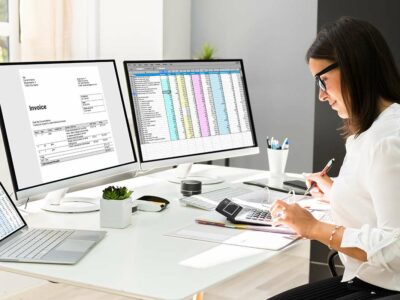
What about the office rent for the vice president of manufacturing? Therefore, businesses typically establish and adhere to their own criteria. Nonmanufacturing overhead costs are the company’s selling, general and administrative (SG&A) expenses plus the company’s interest expense.
- Non-manufacturing expenses have no effect on the production cost of the company because they are treated as period costs.
- Under generally accepted accounting principles (GAAP), these expenses are not product costs.
- It encompasses the costs that must be incurred so as to produce marketable inventory.
- Examples of period costs may include rent, salaries and wages of administrative staff, office supplies, marketing and advertising expenses, and other similar expenses.
- Net sales for 2010 totaled $57,800,000,000, resulting in operating profits of $6,300,000,000.
Direct labor:
The recent experience with U.S. tariffs on China has demonstrated that tariff passthrough to retail prices was low (Cavallo et al, 2021). Reciprocal tariff rates range from 0 percent to 99 percent, with unweighted and import-weighted averages of 20 percent and 41 percent. This article looks at meaning of and differences between two main cost categories for a manufacturing Insurance Accounting entity – manufacturing cost and non-manufacturing cost.
- The sum of direct materials cost and direct labor cost is known as prime cost.
- The income statement reports the revenues, gains, expenses, losses, net income and other totals for the period of time shown in the heading of the statement.
- Examples of marketing and selling costs include advertising costs, order taking costs and salaries of sales persons etc.
- To conceptualize reciprocal tariffs, the tariff rates that would drive bilateral trade deficits to zero were computed.
- Things that are resources owned by a company and which have future economic value that can be measured and can be expressed in dollars.
Legit Expenses That Reduce Tax in Books of Accounts

This calculation assumes that persistent trade deficits are due to a combination nonmanufacturing costs include of tariff and non-tariff factors that prevent trade from balancing. Examples of general and administrative costs include salaries and bonuses of top executives and the costs of administrative departments, including personnel, accounting, legal, and information technology. “Business in Action 2.5” details the materials, labor, and manufacturing overhead at a company that has been producing boats since 1968. Table 2.2 provides several examples of manufacturing costs at Custom Furniture Company by category.

Presentation of Nonmanufacturing Overhead Costs
- The balance sheet reports information as of a date (a point in time).
- “Business in Action 2.6” provides examples of nonmanufacturing costs at PepsiCo, Inc.
- Each table is unique and built to customer specifications for use in homes (coffee tables and dining room tables) and offices (boardroom and meeting room tables).
- A word used by accountants to communicate that an expense has occurred and needs to be recognized on the income statement even though no payment was made.
Manufacturing overhead might include the cost of factory utilities, depreciation on manufacturing equipment, and the salaries of factory supervisors. Sometimes it is difficult to discern between manufacturing and non-manufacturing costs. For instance, are the salaries of accountants who manage factory payrolls considered manufacturing or non-manufacturing CARES Act expenses?
Nonmanufacturing overhead costs are the business expenses that are outside of a company’s manufacturing operations. In other words, these costs are not part of a manufacturer’s product cost or its production costs (which are direct materials, direct labor, and manufacturing overhead). Manufacturing costs other than direct materials and direct labor are categorized as manufacturing overhead cost (also known as factory overhead costs). They usually include indirect materials, indirect labor, salary of supervisor, lighting, heat and insurance cost of factory etc.


The sum of direct materials cost and direct labor cost is known as prime cost. The failure of trade deficits to balance has many causes, with tariff and non-tariff economic fundamentals as major contributors. Regulatory barriers to American products, environmental reviews, differences in consumption tax rates, compliance hurdles and costs, currency manipulation and undervaluation all serve to deter American goods and keep trade balances distorted.
